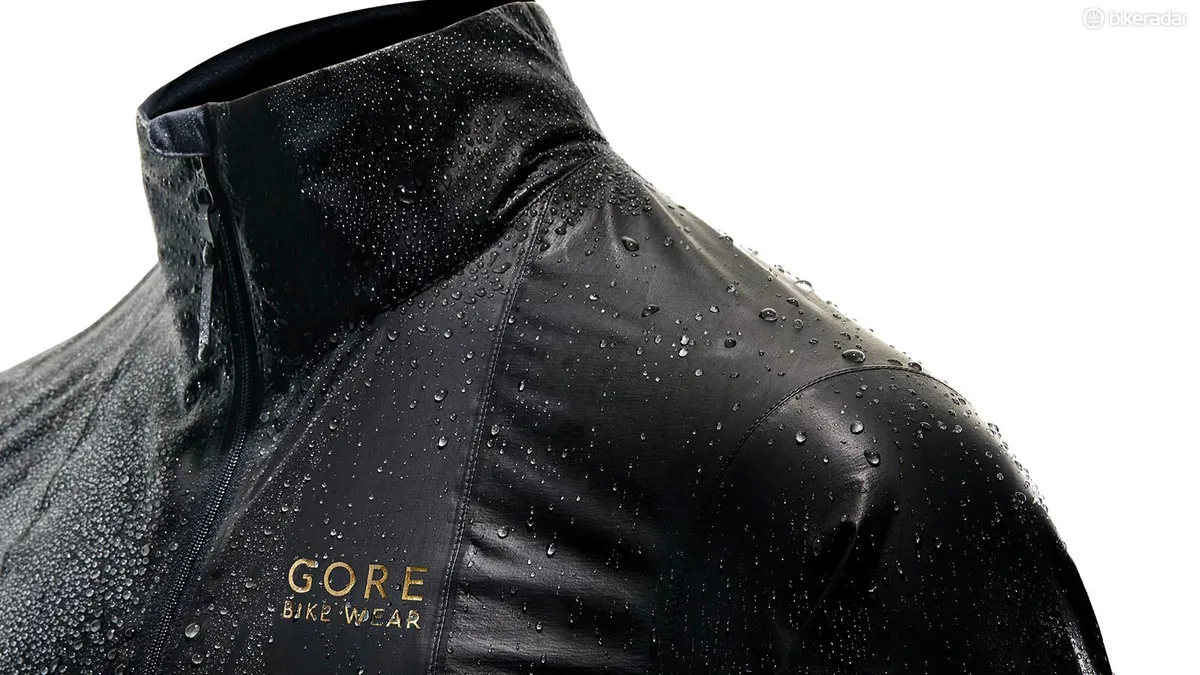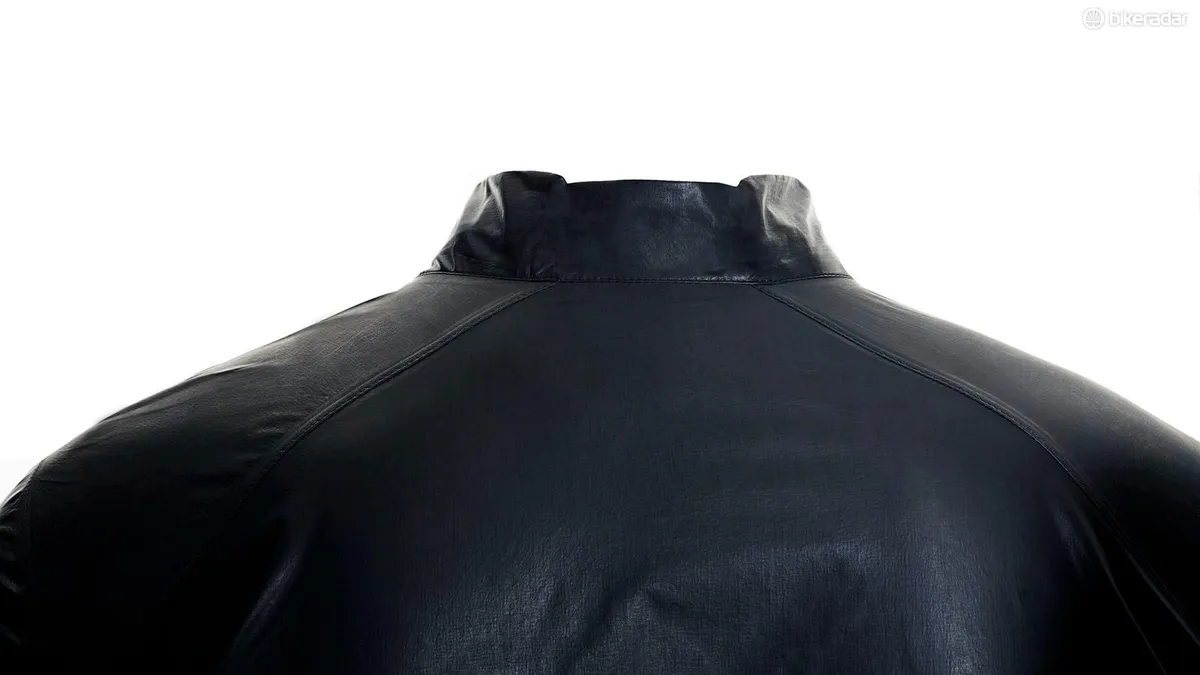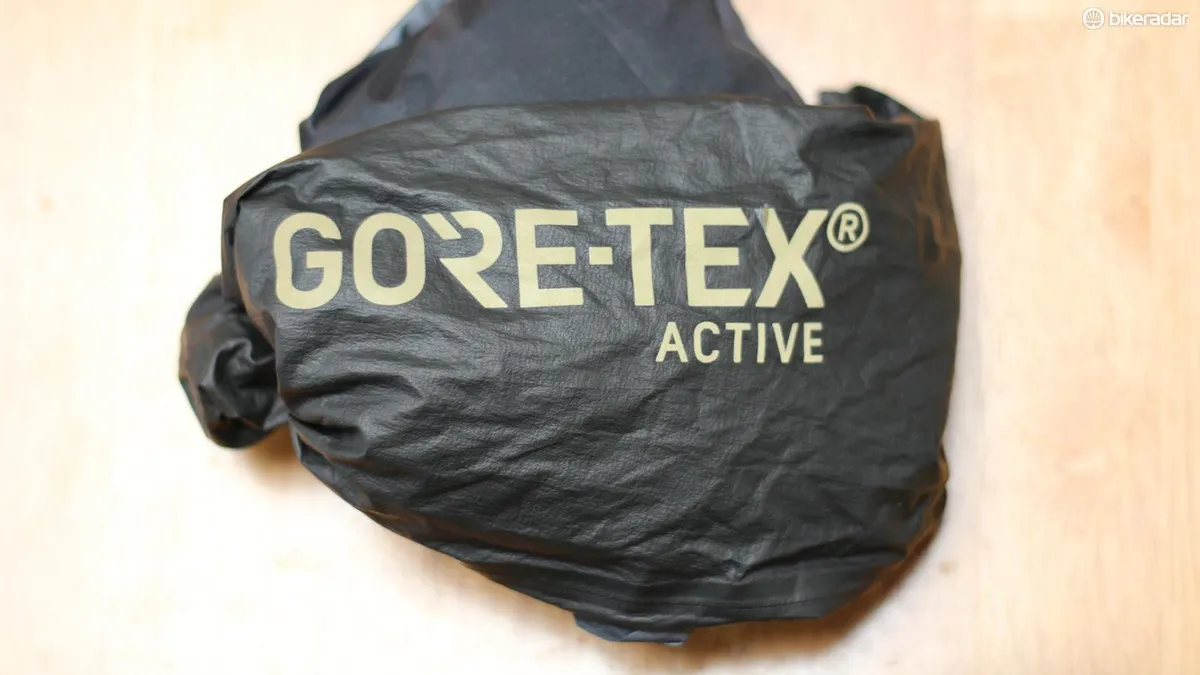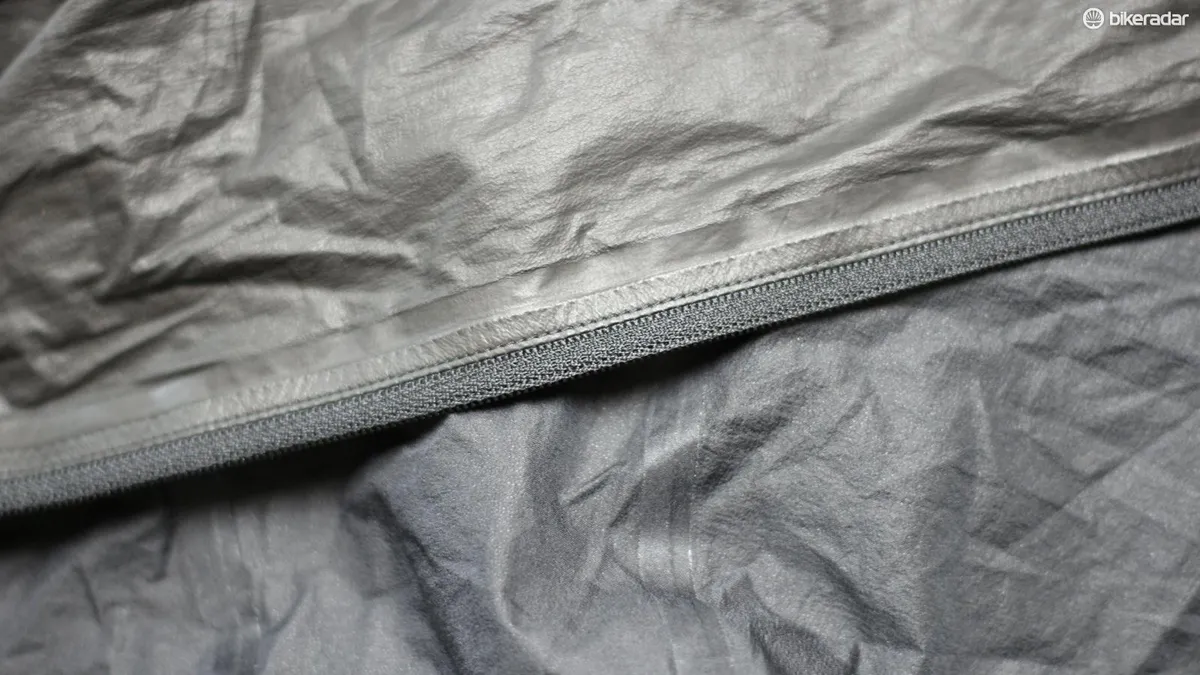Less is definitely more with the new Gore One breathable waterproof jacket. While the performance and price are high, the weight and size are tiny with the jacket packing down into its own pocket that’s about the size of a fist. A quick shake of the jacket removes most all water so you can easily tuck it into your still-dry jersey pocket.
- Best waterproof jackets
- How to rejuvenate your waterproof cycling gear
- Revolutionary One Gore-Tex Active jacket stays waterproof forever
We weighed a test size Large at 109g, and Gore achieved the low weight and small size by completely reworking the structure for what a waterproof jacket is. Instead of a normal protective outer fabric laminated onto a delicate breathable PTFE membrane, the One just has a single, breathable, waterproof layer.
For comparison, most jackets’ weight and pack size is at least 2-3 times the One’s. For example, our Large Castelli Tempesta weighs 194g and our Large Hincapie Edge eVent weighs 293g. They pack to roughly twice the size of the One, too.
Removing the DWR (Durable Water Repellency) treated outer layer that always ‘wets out’ in sustained rain has other benefits. Rather than the water soaking in and sitting on top of the Gore membrane, reducing breathability and conducting away heat so you feel wet/cold even after it’s stopped raining, rain just rolls down the hydrophobic surface in beads like it would on a window.
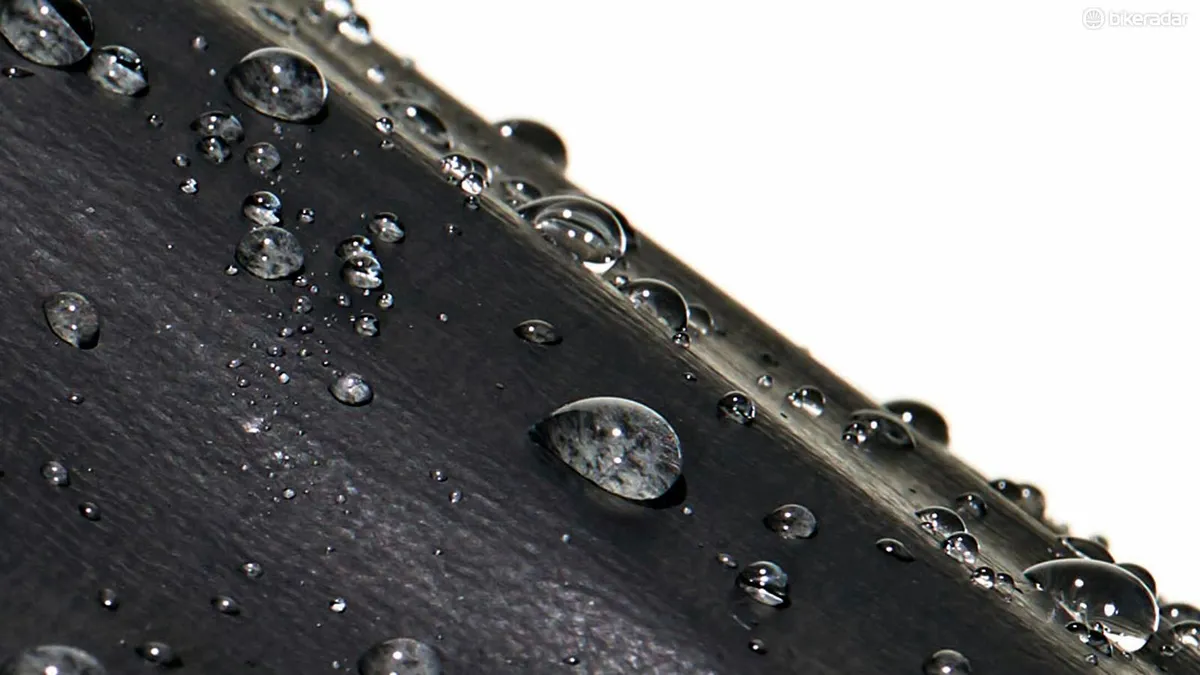
While you can expect that type of performance from a brand new or recently reproofed jacket in a conventional multi-layer fabric for a few minutes, even heavy rain streams off the One for well over an hour. And when it looks like it’s starting to wet out in some areas, like the inside of your elbow, the jacket still keeps sustained rain out. And because the water droplets just shake straight off, you can give it a quick flick and pack it away almost dry as soon as the rain stops.
While it’s not stretchy, the gossamer-thin, almost silent fabric and ultra light weight also gives it incredible mobility. It feels like you’re wearing a hyper-thin softshell layer, not a waterproof jacket.
The remarkably breathable fabric plus minimal seam taping area reduce sweat build up noticeably. You can even see clouds of water vapor ‘steaming’ through the fabric when you stop at the top of long hard climbs.
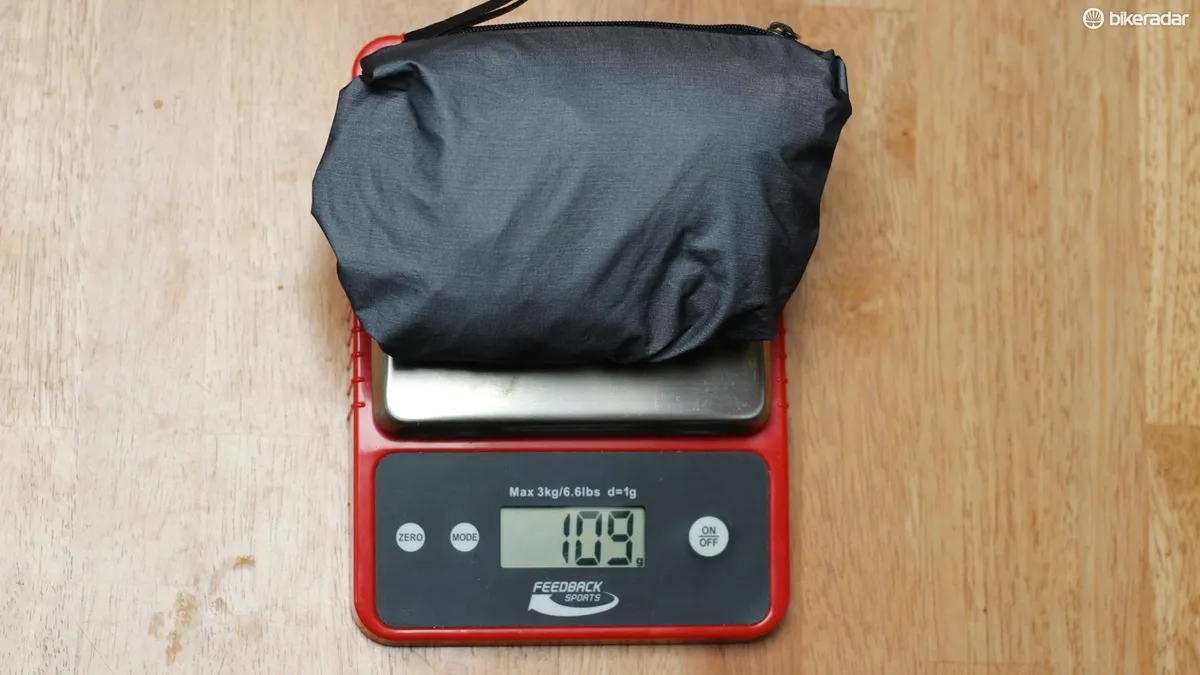
There are practical garment limitations though. Because One is totally waterproof Gore, there aren’t more breathable fabrics in areas less exposed to the weather like with some Windstopper garments. All the seams are taped too, and even though tape widths are kept to a minimum they inevitably reduce overall breathability, so you will still get damp underneath it if you’re working hard.
We both washed the jacket regularly and there has been no perceivable loss of water-shrugging or steam-venting abilities
With no brushed fabric on the inside there’s no thermal value apart from wind protection, so teaming it with the right weight of base layer for the temperature and your work rate is crucial if you’re going to stay comfortable on long rides.
To be fair though you could say that of any waterproof jacket, and the level of protection offered for its weight and pack size is phenomenal.
There’s some subtle gold reflective detailing and two thin reflective pipes on the rear. Although expensive, the cost is actually in line with other hyper-performance mountaineering/running shells that are no more durable.
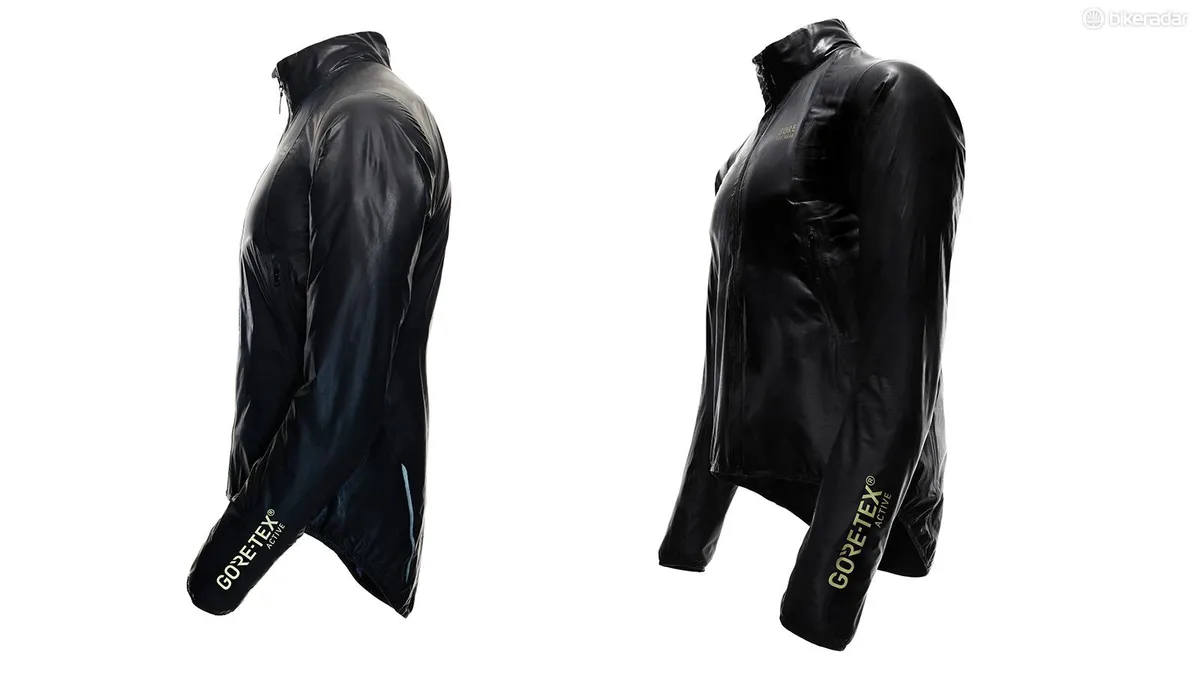
On the subject of durability, if you’re into ultra-light jackets you’ll know there’s always a trade off between grams and toughness. With the exception of one run-in with a stone wall (not saying which tester that was…), our two test jackets stood up to months of use, including being crammed into jersey pockets alongside multi-tools, keys, etc., with no nicks or tears.
We both washed the jacket regularly and there has been no perceivable loss of water-shrugging or steam-venting abilities. One of the reflective logos on one jacket began to peel off a little, however.
Two things prevent it from being the ultimate performance shell for road and cross-country riders. One, it’s cut shorter than we’d like in the back, compared to perfectly tailored jackets like Gore’s own Oxygen 2 or Castelli’s Tempesta. Without any gripper, the back can also ride up, particularly if you have stuffed pockets.
And two, the wrists are cut fairly tight, so removing the jacket while riding is a challenge; it’s easiest to just pull the sleeves off inside out.
If only the tail were longer with a bit of gripper, and perhaps the wrists were easier to get on and off, this would be the perfect rain jacket. The material's performance is remarkable.
